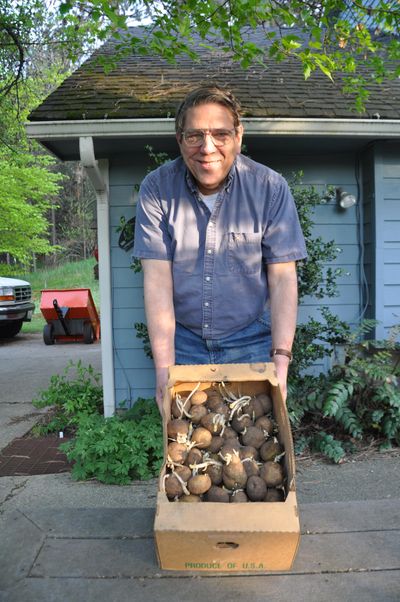Gardening: Spuds are easy to grow, versatile

Vegetable planting is in full swing. We have had just enough rain to keep the soil moist and the chances of a frost are diminishing by the day. It’s time to plant all the cool season vegetables like onions, lettuce, kale, kohlrabi, spinach, lettuce, peas, beets, carrots and last but not least, potatoes.
Potatoes are one of those vegetables that has almost endless uses. They can be baked, fried and made into soup, bread, rolls and cakes, to name a few. Because of this and their ability to hold up in storage until spring, they should be a part of every garden.
Growing potatoes is not complicated but it does take some space. They grow from seed potatoes which are potatoes that are not treated with any growth inhibitors. Grocery store potatoes are treated and can’t be used for growing in the garden. Buy only certified seed potatoes to avoid disease and virus issues. It isn’t necessary to cut the potatoes before planting; they can be planted whole as is.
In the garden, plants need to have soil piled on them as they grow. The new potatoes form between the seed potato piece and the top of the plant. Years ago, I learned a very easy way of growing them from some Bhutanese community gardeners. They created 18-inch-tall rows of mounded soil and then inserted the seed potatoes into the sides of the mound about 6 inches. The potatoes grew all through the mound by the end of the season. Last year using this method, we planted 10 pounds of seed potatoes into a 15-foot mound and harvested 110 pounds of potatoes.
If you have limited space, potatoes can also be grown in large pots, garbage cans or dark-colored buckets. The containers will need drain holes. Remembering that potatoes grow between the seed and the top of the plant, fill your container a third full of potting mix and set six or seven seed potatoes on the soil. Cover them with 3 inches of soil. Once the plants have grown 6 inches, layer on more potting mix as the plants grow until the soil reaches the top of the container. Keep potatoes evenly moist but not soggy. Fertilize them with a low nitrogen fertilizer at planting.
Colorado potato bugs are usually the worst problem for potatoes. The black and orange striped adults appear in mid- to late June and lay small yellow eggs on the underside of the leaves. The dull orange, plump larvae hatch out and begin voraciously eating the leaves. The best way to treat them is with a spray containing Bacillus thuringiensis or Bt. This is a naturally occurring microbe that attacks the larvae. Apply it as soon as you see adult bugs on the plants making sure to get spray on the underside of the leaves.
Potatoes are ready to harvest when most of the leaves have turned yellow and fallen over. Dig them carefully, wash them and allow them to dry before storing them in a cool, dark place.